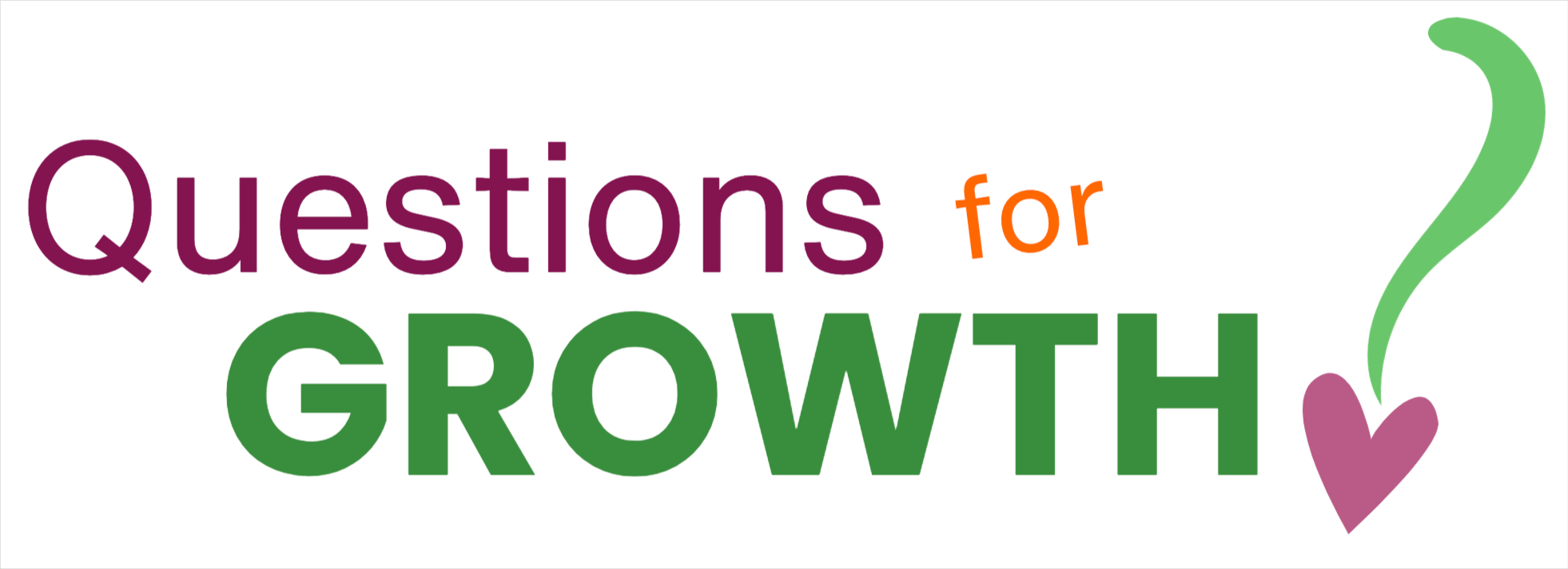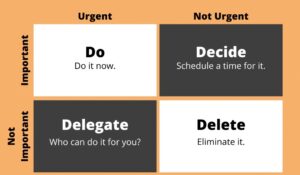If you’ve ever looked into the world of self-improvement and personal development, you might have heard of Stephen R. Covey’s landmark book, ‘The Seven Habits of Highly Effective People’. For me, it wasn’t just another self-help book I stumbled upon – it was the first one I read, and it has left a profound and lasting impression on my journey of self-discovery and growth.
Published in 1989, the book serves as a compass guiding millions to personal and professional effectiveness. As the title suggests, Covey breaks down seven habits that, when adopted and executed correctly, can help anyone become more successful in their personal and professional lives. These habits aren’t quick fixes but fundamental shifts in mindset and behaviour that require commitment and practice.
Habit 1: Be Proactive
Embarking on the journey of Covey’s Seven Habits, the first milestone we encounter is “Be Proactive”. This initial habit lays the foundation for all the subsequent habits and fundamentally shapes our approach towards life.
Being proactive is about owning our lives. Rather than being a passive spectator watching life unfold, it encourages us to step up and become the director of our own life story. At its essence, being proactive means taking initiative, anticipating problems, and taking robust action to influence the outcome rather than just reacting to circumstances as they arise.
To better understand this habit, let’s consider the concept of the ‘Circle of Influence’ and the ‘Circle of Concern’, two pivotal concepts introduced by Covey. Our ‘Circle of Concern’ encompasses the wide range of things we care about – from global issues like climate change to personal concerns such as health or job security. Within this Circle of Concern is a smaller ‘Circle of Influence’, which includes things we can do something about, things we can directly impact.
A reactive person tends to focus on elements outside their Circle of Influence, which they have little to no control over. They often blame external factors for their situation and feel victimised or powerless. On the other hand, a proactive person concentrates on their Circle of Influence, acting on the areas they can impact. As a result, their Circle of Influence expands.
To bring this concept to life, consider a real-world example: Imagine two employees who have recently been laid off from their jobs – let’s call them Anna and Ben.
Anna, who tends to be reactive, spends her time lamenting her misfortune, blaming the economy, and worrying about her future prospects. Despite her talents, her focus on things outside of her control leaves her feeling paralysed and helpless.
In contrast, Ben embodies the proactive approach. Upon losing his job, he acknowledges the setback but doesn’t let it dictate his response. Instead, he chooses to see this as an opportunity for growth and immediately takes action. He updates his resume, starts networking, enrols in online courses to up-skill, and begins exploring other industries that may be thriving despite the economic downturn. In doing so, he’s actively expanding his Circle of Influence.
While both Anna and Ben were subject to the same circumstance, their reactions – and consequently, their experiences – are remarkably different. This demonstrates the essence of being proactive – it’s not about what happens to us, but how we respond to what happens.
Another perspective of proactivity comes from recognising and choosing our responses based on principles and values rather than moods or circumstances. For instance, a proactive person doesn’t let a rainy day dampen their mood or productivity. They carry an “internal weather” with them, choosing their actions based on their intrinsic values rather than being swayed by external circumstances.
In essence, Habit 1: Be Proactive is about recognising our inherent power to direct our lives. It empowers us to take responsibility for our actions and attitudes, shifting our focus from what we can’t control to what we can influence. By doing so, we become active contributors to our life story, rather than mere spectators.
Habit 2: Begin with the End in Mind
The second habit that Stephen Covey discusses in his book, ‘The Seven Habits of Highly Effective People’, is “Begin with the End in Mind”. This habit is about setting clear, long-term goals for our lives and using these as our compass to guide our daily actions and decisions.
When we “begin with the end in mind,” we first establish a clear understanding of our destination – our vision or our ultimate goals – before embarking on our journey. This habit emphasises the importance of visualising the outcome we desire, whether in our personal lives, careers, relationships, or health, and then designing a path to get there. It’s about having a clear purpose and sticking to it, which can provide us with guidance, persistence, and motivation, even when we face obstacles.
Consider a builder constructing a house. The builder doesn’t begin without careful planning. They first visualise the final structure, understanding the desired outcome in detail – the number of rooms, the layout, the style. They have blueprints and sketches to guide the construction process. Just as a builder wouldn’t start without a plan, we, too, shouldn’t start our lives without a clear vision of our desired end state.
The concept of beginning with the end in mind can also be applied in our daily lives, not just in the grand scheme of things. Let’s take the example of a student studying for an exam, let’s call her Emily. Emily knows that she wants to score an ‘A’ on her upcoming math exam. This ‘A’ grade is the ‘end’ that she has in mind. Now, to achieve this, she has to work backwards to understand what it takes to get there. This might include creating a study plan, dedicating certain hours of the day for studying, seeking extra help if necessary, and regularly assessing her progress. By having a clear end goal, Emily is more likely to stay focused and motivated in her studies.
Another example could be in the context of relationships. Suppose a person aspires to have a loving, supportive, and mutually respectful relationship with their partner. With this end in mind, they might express their feelings openly, invest time in understanding their partner, develop patience, and actively work on resolving conflicts in a healthy way. The vision of a harmonious relationship guides their behaviour and decisions in their day-to-day interactions.
But how do we determine our “end?” Covey suggests crafting a personal mission statement or a statement of values and life goals. It’s an exercise of deep introspection, wherein we identify what truly matters to us, what principles we hold dear, and what legacy we wish to leave. This personal mission statement becomes our guiding star, aligning our actions with our values and aspirations.
In essence, Habit 2, “Begin with the End in Mind,” serves as a reminder of the power of vision. By developing a clear picture of where we want to go, we can make decisions and take actions that align with our deepest values and move us closer to our goals. It’s a habit that encourages us to live life by design, not by default.
Habit 3: Put First Things First
Building on the foundation of the first two habits, Habit 3: “Put First Things First” provides us with the practical strategies and skills to implement our vision. Essentially, it’s about personal time management – not merely organising our schedules, but prioritising our life based on what’s most important to us.
After understanding that we have the power to control our reactions (Habit 1: Be Proactive) and creating a clear vision of our life’s goals (Habit 2: Begin with the End in Mind), Habit 3 compels us to translate our vision into reality. It’s about taking action, but not just any action – it’s about making sure that the actions we take align with our values and contribute to our long-term goals.
Covey uses a simple yet powerful quadrant to illustrate this concept – often referred to as the “Eisenhower Box” or “Eisenhower Matrix,” named after the 34th President of the United States, Dwight D. Eisenhower. This matrix helps us prioritise tasks based on their importance and urgency.
Quadrant I is for the tasks that are both urgent and important. Quadrant II is for tasks that are important, but not urgent. Quadrant III is for tasks that are urgent, but not important. Quadrant IV is for tasks that are neither urgent nor important.
To put first things first, Covey encourages us to focus on Quadrant II activities – those that are important but not urgent. These are activities that contribute to our long-term mission, values, and goals, whether it be building relationships, planning, or self-improvement.
Consider a manager, for example, who spends most of her day dealing with urgent matters – responding to emails, attending meetings, putting out fires. All these tasks seem crucial because they’re urgent, demanding immediate attention (Quadrant I and III). However, they may not necessarily align with her long-term objectives.
To “put first things first,” this manager would need to spend more time on Quadrant II activities. This could include strategic planning, team development, or pursuing further education. While these tasks are not urgent, they are vital for her long-term success and effectiveness.
Similarly, consider your personal health. Going for a run, eating a nutritious meal, meditating – these activities are not urgent. Nobody is going to immediately penalise you for skipping a workout or eating fast food. However, these are Quadrant II activities because they’re essential for your long-term health and well-being.
The challenge with Quadrant II activities is that they’re easy to neglect because they’re not urgent. They require initiative and proactivity. However, the more time we spend on these tasks, the smaller the other quadrants become, leading to improved productivity, balance, and fulfilment.
In essence, Habit 3: Put First Things First is about life management – your purpose, values, roles, and priorities. It’s about saying ‘yes’ to your highest priorities and having the ability to say ‘no’ to other activities. Remember, it’s not about being busy; it’s about being effective. The key lies in being proactive and focusing on what truly matters.
Habit 4: Think Win-Win
The fourth habit in Covey’s guide is “Think Win-Win”. This habit is about cultivating an attitude of mutual benefit and satisfaction in our interpersonal relationships. It’s a philosophy that seeks a solution where everyone wins, where the success of one person does not come at the expense of others.
Think Win-Win shifts our perspective from competition to cooperation. It moves us away from the ‘scarcity mindset’ – the belief that there’s only so much pie to go around, and if someone gets a big piece, there’s less for me. Instead, it cultivates an ‘abundance mindset’, recognising that there’s enough pie for everyone, and we can create even more pie together!
To illustrate the power of this habit, let’s consider a business scenario involving two companies – Company A and Company B. Both companies are competitors in the same industry.
Company A, traditionally, has a win-lose mentality. They believe their success lies in beating Company B, even if it requires tactics that might harm Company B. This adversarial relationship breeds negativity and does not foster growth or innovation.
On the other hand, Company B adopts a win-win mentality. They recognise that by collaborating with Company A, they could combine their resources and knowledge to expand their industry, creating a bigger market for both. This could involve co-developing products, pooling research, or sharing distribution networks. The result is an environment of cooperation and mutual growth.
A personal example could be in a family setting. Suppose there’s a conflict between siblings over sharing a room. One sibling, Lisa, wants to play her guitar, and the other, Sarah, wants to read in silence. A win-lose approach might involve parents dictating who gets to use the room, leading to resentment from the other sibling.
Instead, they choose a win-win approach. They sit down and discuss the problem, seeking to understand each other’s perspective. They then brainstorm solutions that satisfy both parties – perhaps Lisa can use headphones to play her guitar, and Sarah can have quiet reading time scheduled when Lisa is not practicing. In this way, they respect each other’s needs and find a mutually beneficial solution.
However, it’s important to note that win-win isn’t about being nice or avoiding conflict. It’s about being courageous to express your needs, being considerate to understand others’ needs, and being creative to find solutions that accommodate everyone. It involves developing effective communication, empathy, and negotiation skills.
In situations where a win-win solution isn’t possible, Covey advises a “no deal” approach, wherein both parties agree to disagree amicably, preserving the relationship.
In essence, Habit 4: Think Win-Win calls for a fundamental shift in our approach to relationships and conflicts. It promotes a spirit of harmony and cooperation, leading to better, more sustainable outcomes. It’s not just your way or my way; it’s a better way, a higher way.
Habit 5: Seek First to Understand, Then to Be Understood
Habit 5, “Seek First to Understand, Then to Be Understood”, is about effective communication. In essence, it’s about listening with the intent to understand others before seeking to be understood ourselves. This means not just hearing the words someone is saying, but genuinely trying to understand their perspective, feelings, and experiences.
Stephen Covey argued that many of the issues in communication stem from people’s tendency to prescribe a solution before diagnosing the problem. We often listen with the intention of replying, not understanding. We’re either speaking or preparing to speak, filtering everything through our own lens and often projecting our own autobiographical experiences onto others’ situations.
To illustrate this habit, let’s take the example of a manager and an employee. Suppose the employee is struggling with productivity. The manager’s instinct might be to immediately propose solutions – maybe recommend a time management course, or suggest better planning. But if the manager practices Habit 5, they would first seek to understand the root cause of the issue. They would actively listen, asking open-ended questions, encouraging the employee to express their feelings, and showing empathy. The manager might discover that the issue is not a lack of skills but a personal problem affecting the employee’s performance.
This approach not only helps identify the appropriate solution but also makes the employee feel valued and understood, thereby building trust and openness.
A personal example could be in a relationship between friends or partners. Let’s consider a scenario where one friend is upset because they felt ignored by the other during a gathering. The ‘seek first to understand’ approach would involve the listener setting their defensiveness aside, refraining from justifying their behavior immediately, and instead trying to understand their friend’s feelings. It might involve questions like, “Can you help me understand why you felt ignored?” or empathetic responses like, “I can see why you would feel that way.”
Once the friend feels heard and understood, the listener can then explain their own perspective. By understanding each other’s feelings and perspectives, they can work towards a solution or compromise that respects both parties’ needs.
This habit is deeply grounded in empathy. Covey introduces the concept of empathic listening – listening with the intent to understand both emotionally (the feelings) and intellectually (the ideas). It’s a powerful skill that helps build deeper, more trusting relationships and allows for more genuine communication.
However, it’s important to note that this habit requires patience and practice. Listening with empathy goes against our natural tendencies and societal conditioning. But with conscious effort, it can become a transformative habit, enhancing not only our personal and professional relationships but also our own peace and clarity.
In essence, Habit 5, “Seek First to Understand, Then to Be Understood”, teaches us to listen first and talk second. By seeking to understand, we create an environment of empathy and mutual respect where everyone feels heard, leading to more effective and harmonious interactions.
Habit 6: Synergise
The sixth habit, “Synergise”, revolves around the concept of teamwork and cooperation. It suggests that the whole is greater than the sum of its parts – when people work together, they can achieve more than they could individually. Synergise is about finding the third alternative – not your way, not my way, but a better way.
This habit is about appreciating the differences between people, recognising that everyone has unique skills and perspectives that can contribute to a richer, more effective outcome. Synergy allows us to uncover new possibilities and to create solutions that are better than what anyone could have created alone.
To illustrate this, let’s consider an example in a corporate setting. Suppose a project team is composed of individuals with diverse skills – a graphic designer, a coder, a marketer, a salesperson. Individually, they are competent in their fields. But when they synergise, they can create a product that none of them could have managed alone. The designer creates a stunning visual, the coder makes it functional, the marketer ensures it reaches the target audience, and the salesperson pitches it effectively. Together, they bring a vision to life.
Another example could be found in a classroom. Suppose a group of students is working on a history project. One student is a strong researcher, another is good at writing, a third is a skilled presenter, and a fourth is a creative thinker who comes up with innovative ideas. By synergising, they can produce a well-researched, well-written, creatively presented project.
However, synergy is not just about professional collaboration. It’s applicable in personal relationships as well. For instance, within a family, each member brings unique perspectives and abilities. Synergy could involve combining the parents’ experience and wisdom with the children’s fresh perspective and tech-savviness to make household decisions that everyone agrees on.
Synergy involves open-mindedness and respect for diversity. It requires us to be humble and acknowledge that we don’t know everything, to listen and value other people’s input, and to be willing to seek solutions that may be better than our own.
It’s important to remember that synergy is not just compromise. Compromise is a “lose-lose” situation where each party gives up part of what they want. Synergy, on the other hand, is a “win-win” situation where we come up with a solution that’s better than what any individual wanted.
In conclusion, Habit 6, Synergise, invites us to see others not as competitors but as collaborators, to appreciate the diversity of skills and perspectives, and to harness that diversity to achieve common goals. It’s about creating new insights, discovering new opportunities, and unlocking the potential of collective intelligence. It’s a transformative habit that can lead to breakthrough solutions and harmonious relationships, both in our professional and personal lives.
Habit 7: Sharpen the Saw
The seventh and final habit Covey presents is “Sharpen the Saw”. It’s an analogy that suggests a balanced, consistent, and continuous approach to self-improvement and renewal. It revolves around the idea that we must nurture and renew ourselves in four dimensions: physical, social/emotional, mental, and spiritual, to maintain and increase our effectiveness.
Physical involves taking care of our physical health and wellbeing through regular exercise, a balanced diet, and sufficient rest. For instance, a busy entrepreneur might neglect their physical health due to a hectic work schedule. But by dedicating time for regular workouts, proper meals, and enough sleep, they can enhance their energy, productivity, and overall wellbeing.
Social/Emotional pertains to building and maintaining healthy relationships and fostering a positive emotional state. This could involve spending quality time with family and friends, practicing empathy and active listening, or adopting stress management techniques. A student, for example, could nurture their social dimension by taking breaks from study to spend time with friends or participate in group activities. They could address their emotional health by seeking counselling or practicing mindfulness to manage exam stress.
Mental relates to continual learning, critical thinking, and maintaining mental agility. This could be achieved by reading, writing, solving puzzles, or learning new skills. A retiree, for instance, could choose to learn a new language, enrol in an online course, or engage in hobbies that challenge their mind, such as painting or playing chess. These activities keep the mind active and stimulate cognitive function.
Spiritual concerns our core values, purpose, and commitment to our inner self. This doesn’t necessarily mean religious practice – it could be anything that helps us connect with our inner selves and find a sense of peace and purpose. This might include meditation, yoga, spending time in nature, or engaging in creative activities. A corporate worker may find a few minutes of meditation in the morning helps them start their day with a sense of calm and focus.
The key to Habit 7 is balance. Neglecting one dimension for another can lead to frustration, burnout, or a feeling of emptiness. For example, a professional athlete might focus heavily on the physical dimension but neglect the emotional, leading to feelings of loneliness or emotional instability.
Covey emphasises that “sharpening the saw” is not a one-time activity but a continuous process. We must take time out of our ‘production’ to invest in ‘production capability’ – in other words, we need to pause from our busy lives to invest in our personal growth and wellbeing.
Habit 7, then, is about self-care, growth, and renewal. It’s the habit that makes all the other habits sustainable. It empowers us to move forward, to learn, to adapt, and to continually align ourselves with our mission, values, and goals. It’s about preserving and enhancing our greatest asset – ourselves.
Covey’s ‘The Seven Habits of Highly Effective People’ was my introduction to the world of self-help literature, and its impact was transformative. Each habit taught me to view the world from a fresh perspective, challenging me to question old habits and cultivate new ones.
Concluding thoughts..
The beauty of Covey’s seven habits is their universal applicability. Regardless of your age, profession, or background, you can adapt these habits to enhance your personal and professional effectiveness. From the first page to the last, the book continually encourages you to live with integrity, optimise relationships, and strive for continuous self-improvement.
Remember, however, that understanding these habits is only the first step. The real magic happens when you apply them in your daily life, which requires patience, persistence, and practice. As I continue my journey, I invite you to embark on yours. Let’s transform ourselves into more effective individuals, together












